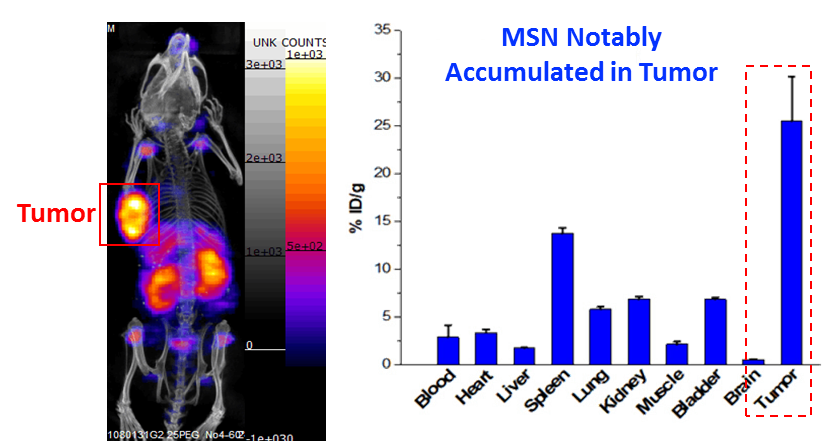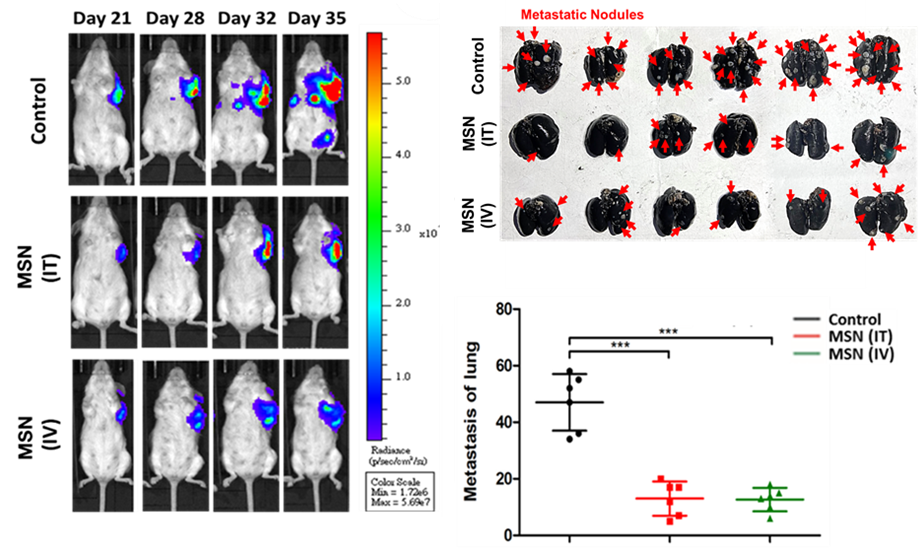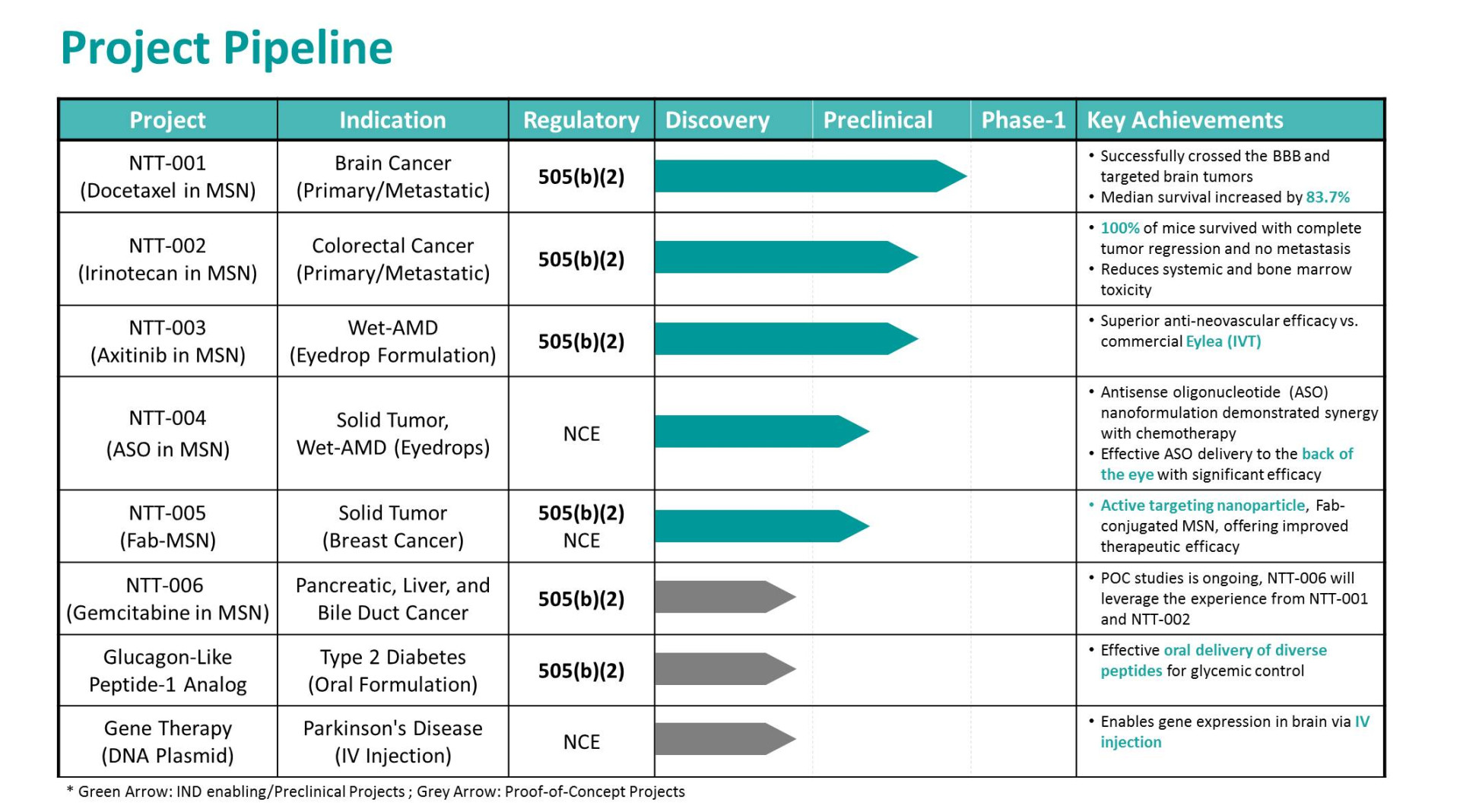Menu
Platform Technologies
Brain Disease
Cancer Therapy
Cancer Delivery
Summary
• NTT’s small-sized (30 nm) and ligand-free MSNs with customizable properties facilitate specific tumor targeting through the enhanced permeability and retention (EPR) effect.
• The small particle size enables deeper tumor penetration, improving the delivery of therapeutic payloads into the core regions of solid tumors.
• The unique anti-metastatic activity of MSNs inhibits cancer metastasis by modulating cell motility
Advantages of MSN for Cancer Treatment
• Enhanced Tumor-Targeting Specificity
• Deeper Tumor Penetration
• Anti-Metastasis Capability
• Substantial Decrease of Toxicity
• Overcoming Drug Resistance in Many Incidences
Tumor Targeting and Deeper Penetration
Compared with conventional nanoparticles (typically > 100 nm), NTT’s MSNs, featuring a smaller particle size (~ 30 nm) and customized surface modifications, offer superior tumor targeting and deeper tumor penetration. These advantages arise from the enhanced EPR effect and improved diffusion within the dense microenvironment of solid tumors.

* SPECT/CT images of MSN biodistribution after IV injection for 24 hours in 4T1 tumor-bearing mice
Anti-Metastatic Activity
• Metastasis is the leading cause of cancer-related mortality. The unique anti-metastatic activity of MSNs offers a promising approach to inhibit cancer metastasis, thereby prolonging overall survival.
• MSN (without drug loading) can inhibit cancer metastasis by affecting the motility of cells. Mechanistically, MSNs gradually disintegrate into sub-3 nm silica fragments under physiological conditions. These ultra-small silica nanoparticles are known to bind to the integrin receptors, subsequently modulating the downstream FAK-ERK-Paxillin pathway, affecting cell focal adhesion and resulting in the inhibition of cell migration.

* IT = Intratumoral Injection; IV = Intravenous Injection
* Further details of anti-metastatic activity can be found in our publication: ACS Appl. Mater. Interfaces 2024, 16, 61787
